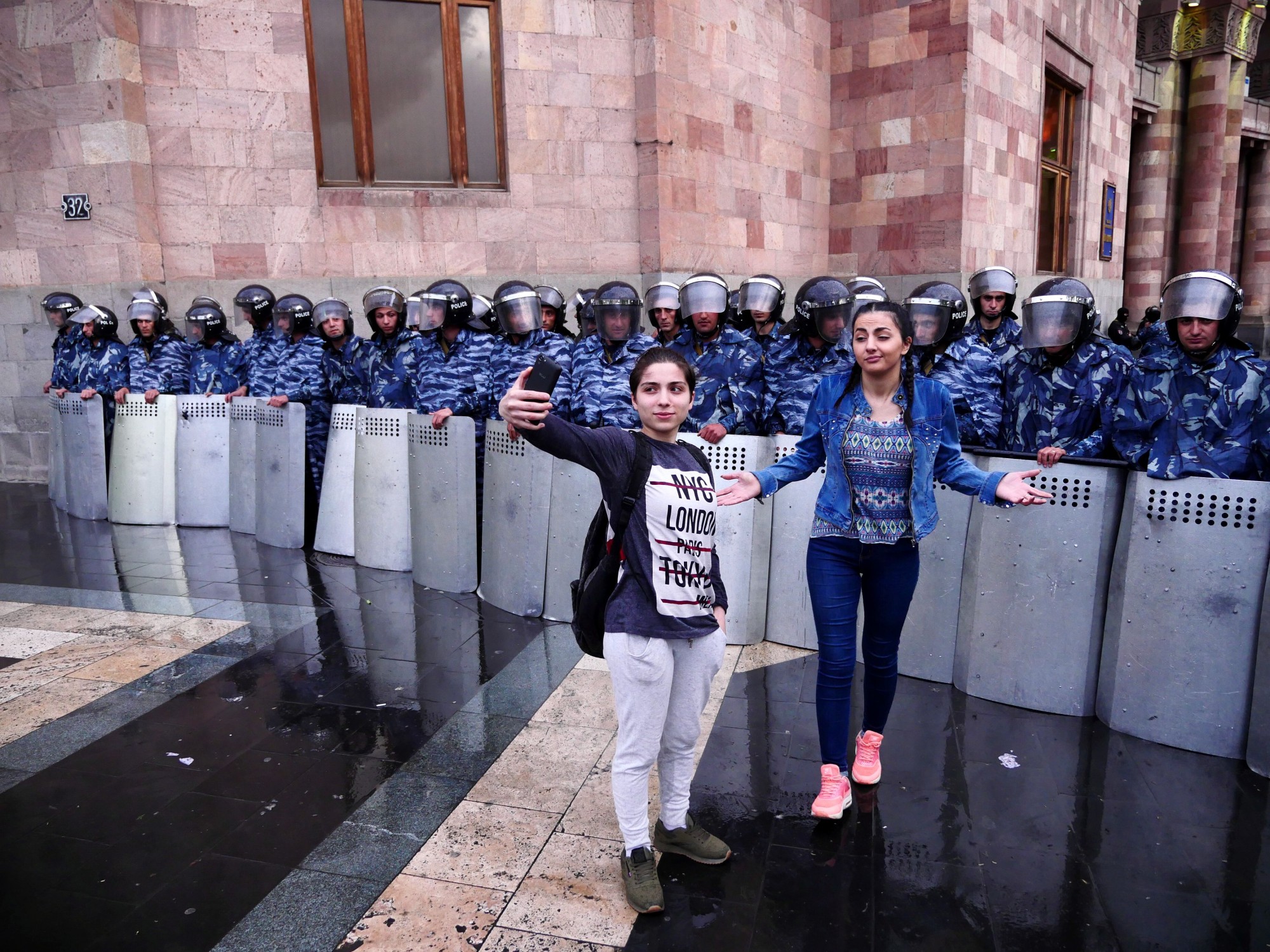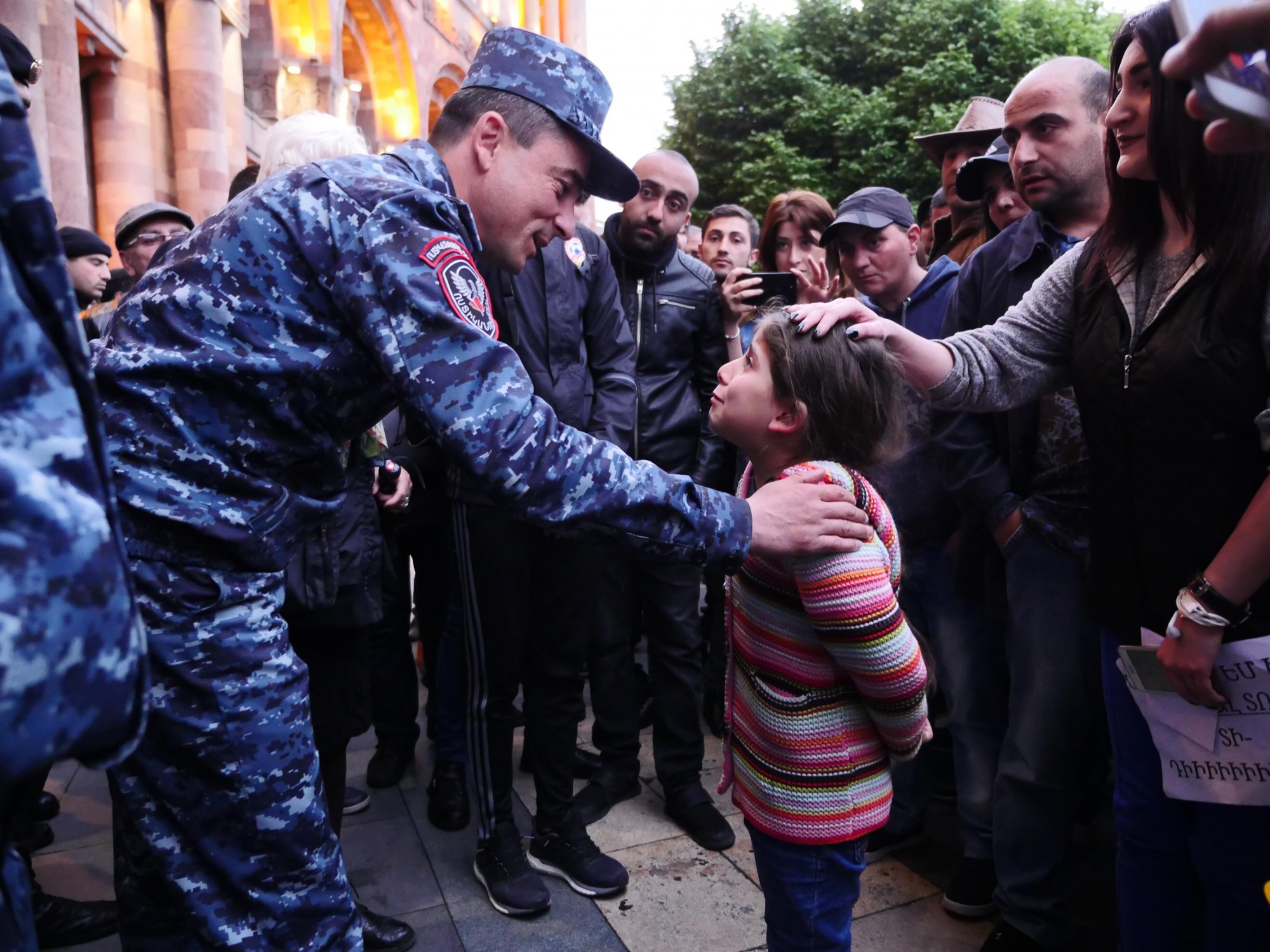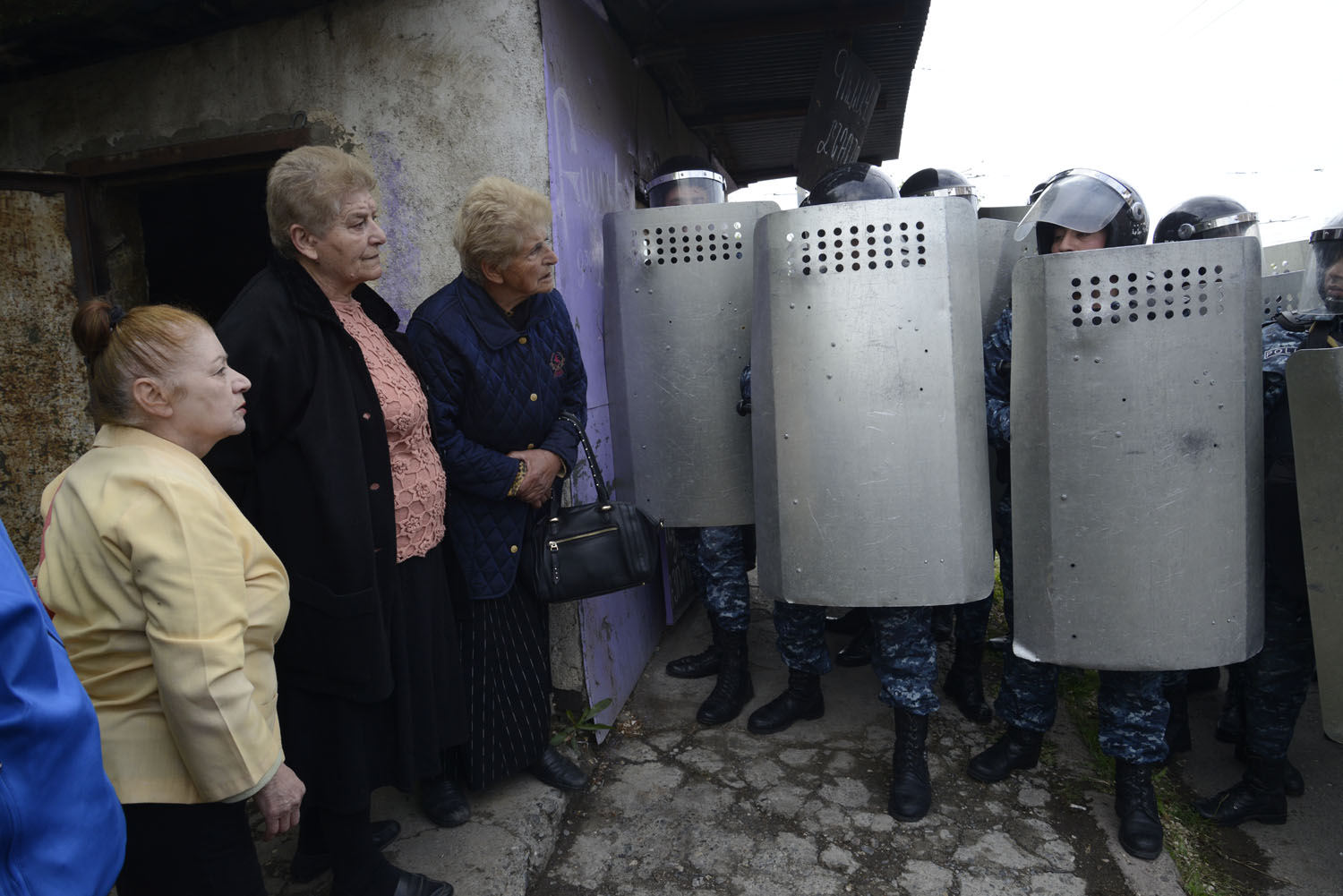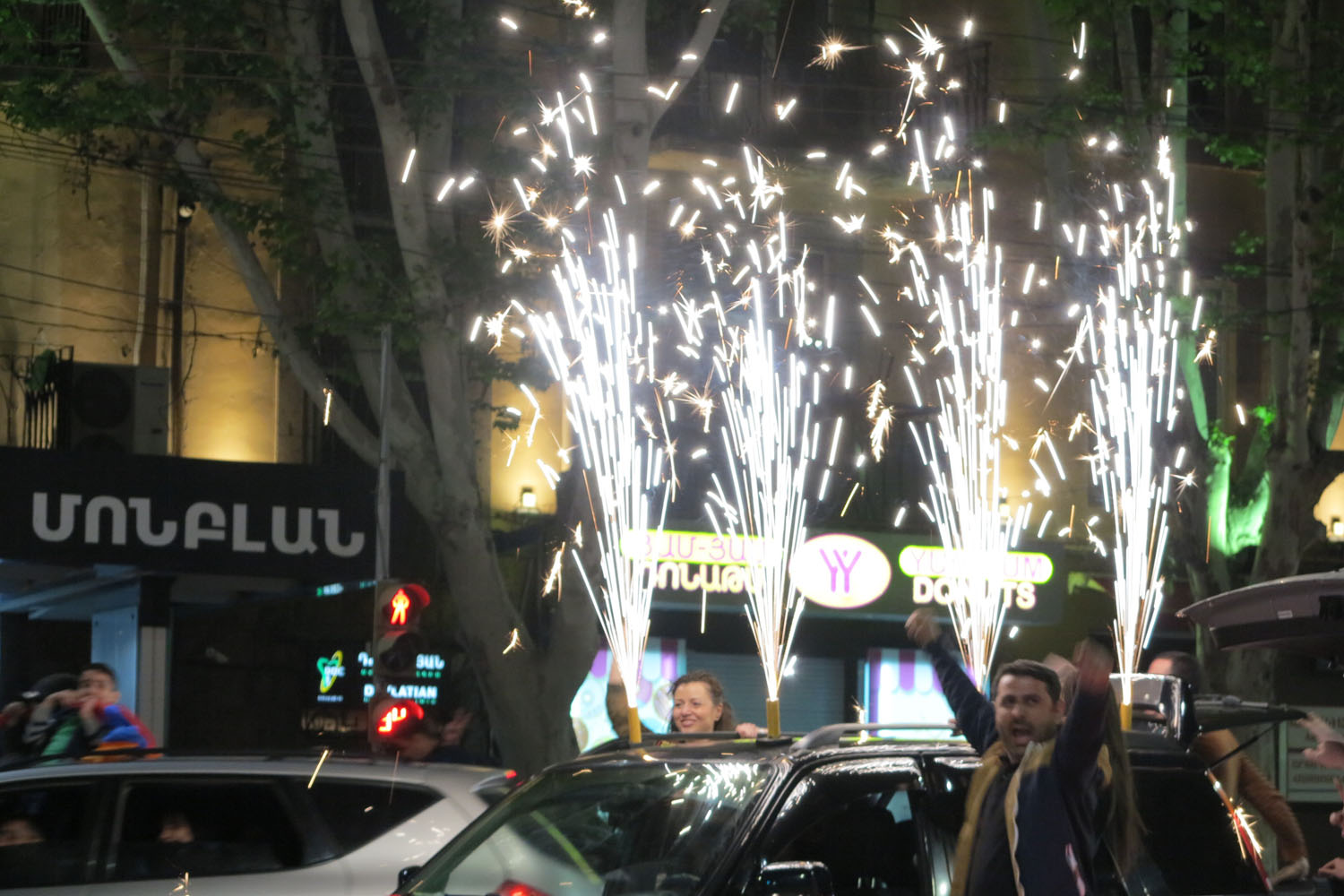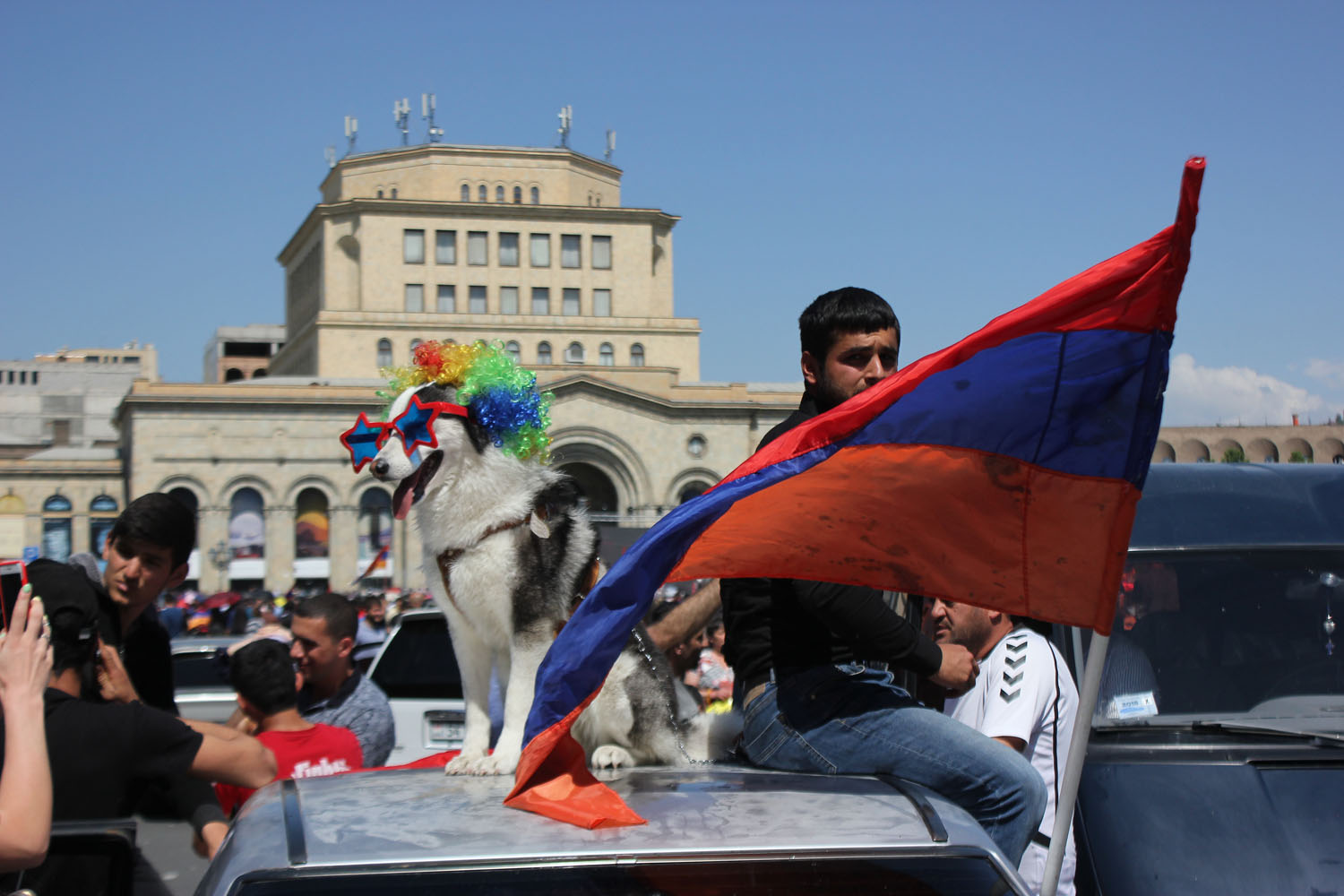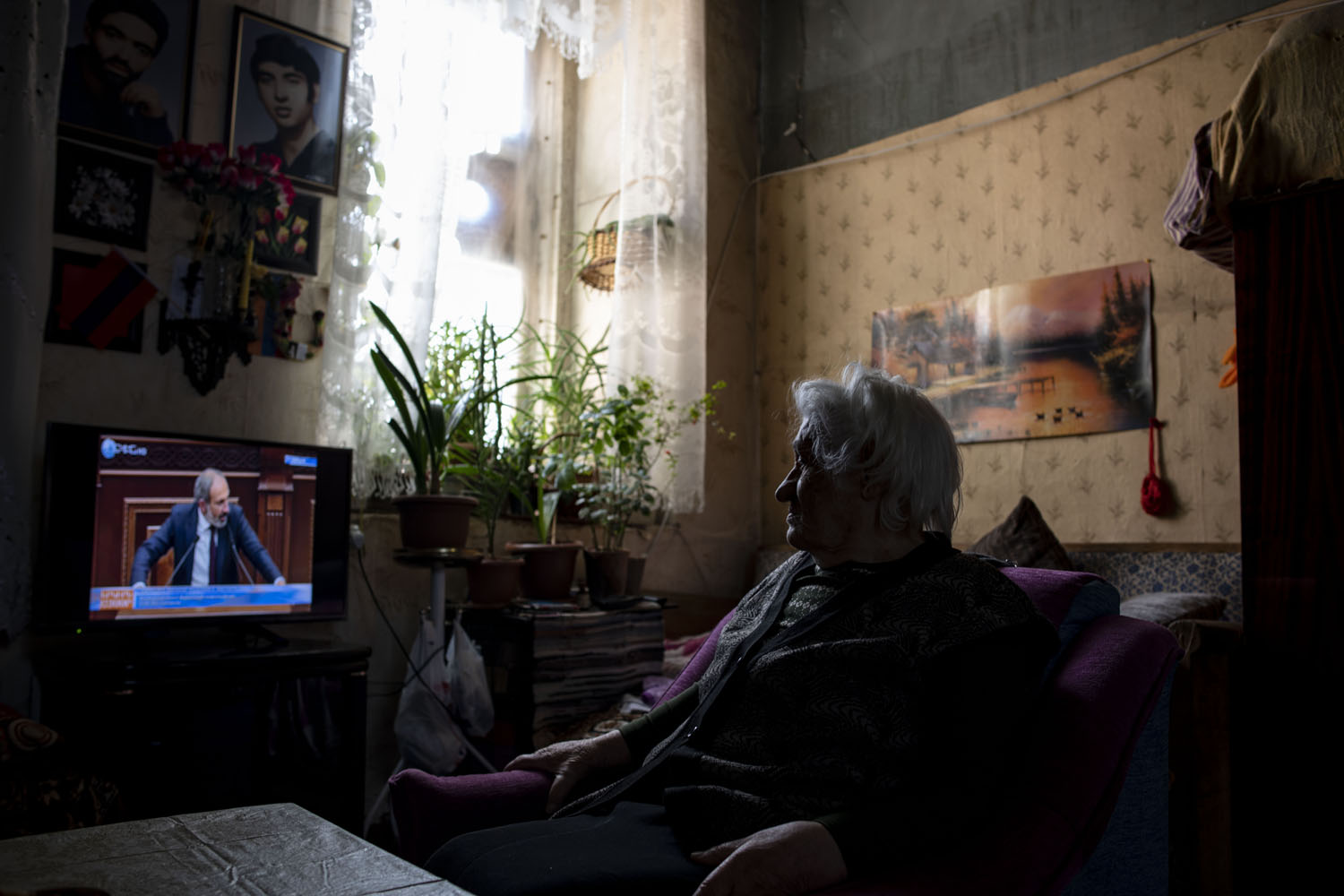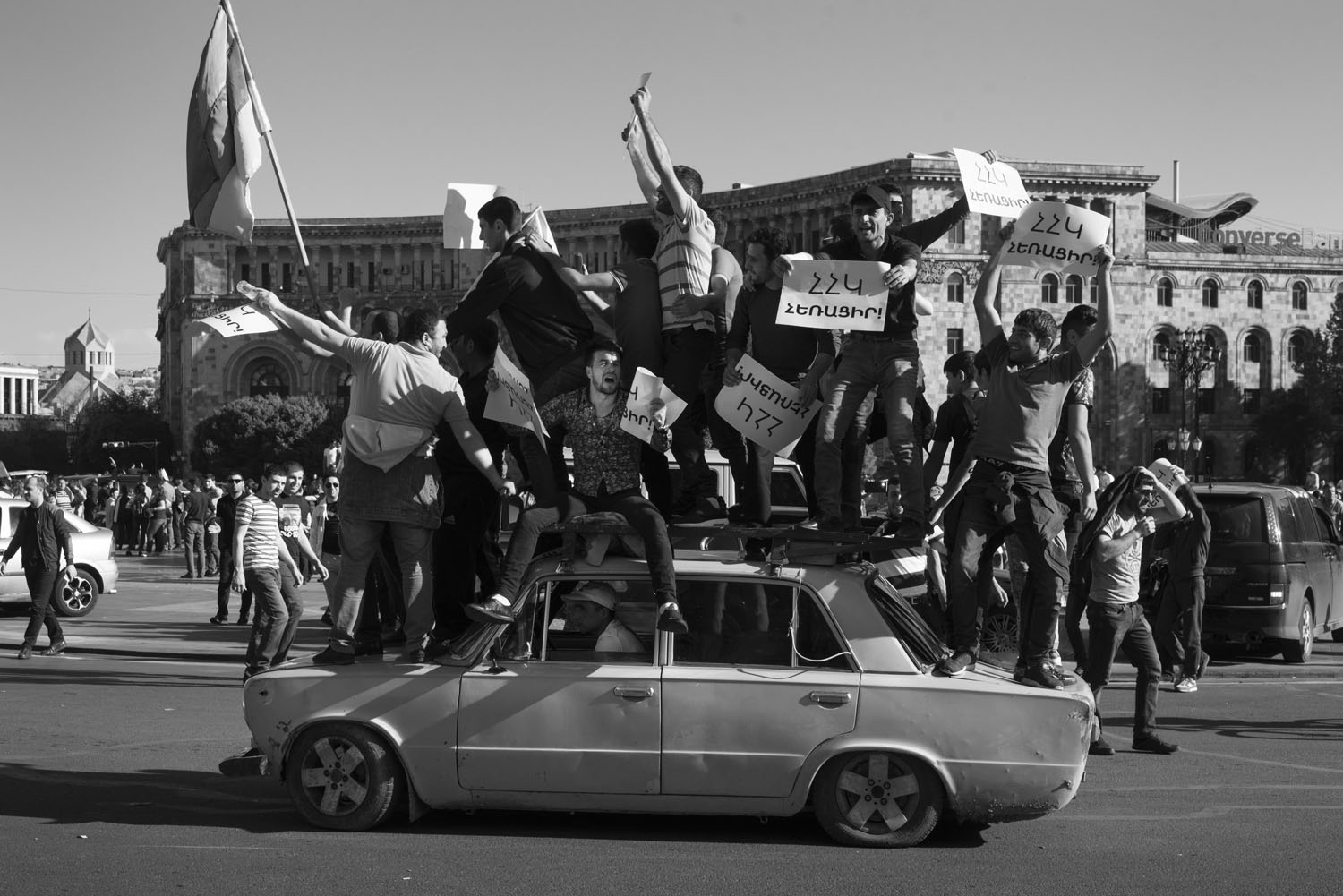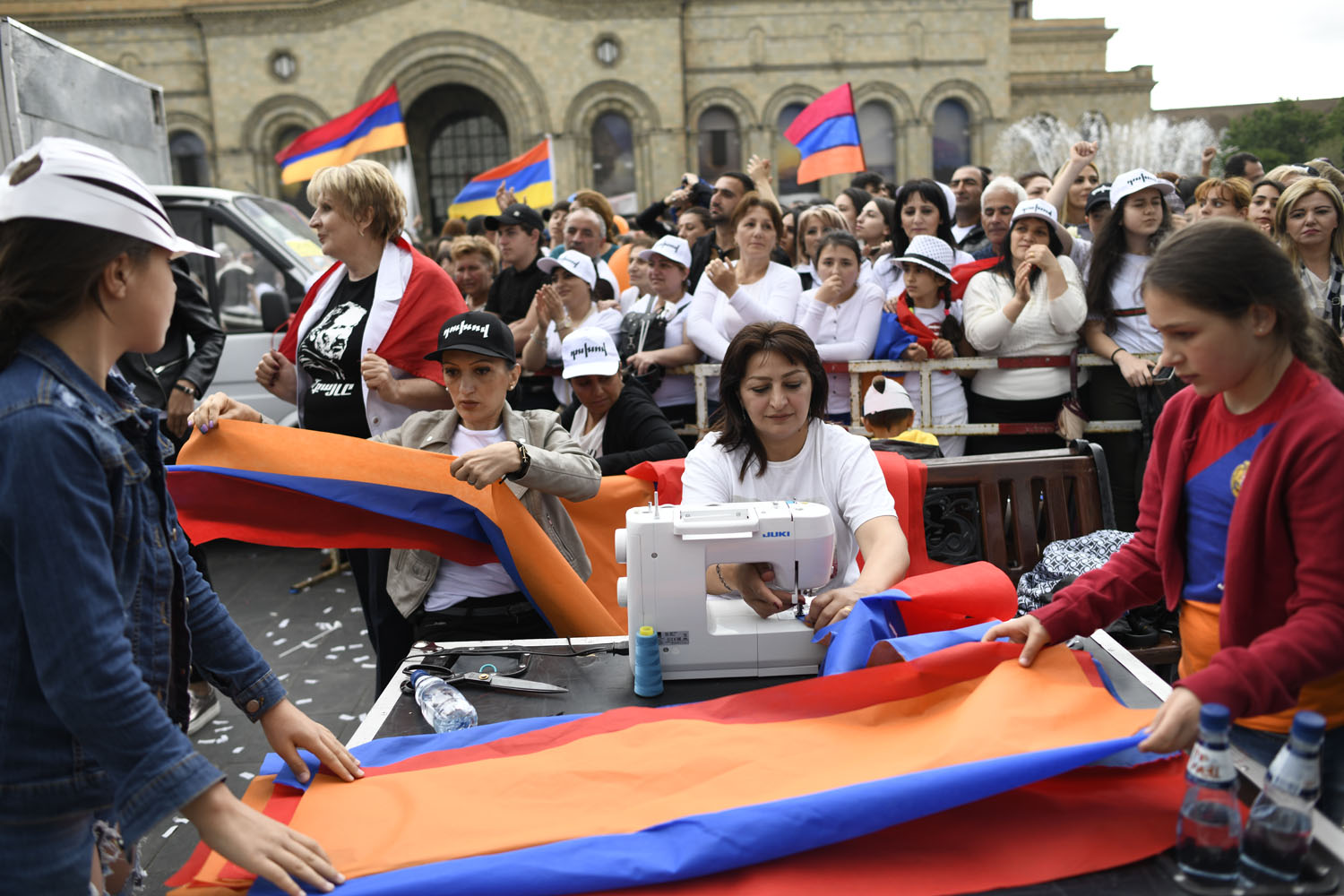Capturing the revolution: 6 photographers share their stories from Armenia’s vibrant street protests
The "Velvet Revolution" formed a new image of Armenia, with its own distinct visual language: youth, hope and a steely determination. Meet the photographers who immortalised it all
Walls of riot police. Chanting protesters on Republic Square. Demonstrators standing on top of family cars, draped in the Armenian tricolour. For thousands of protesters, weeks of demonstrations in Yerevan — and across Armenia — have ended in victory, with former President Serzh Sargsyan relinquishing his post and revolutionary leader Nikol Pashinyan appointed as prime minister.
But for the millions watching across the globe, the uprising formed a new image of Armenia, with its own distinct visual language: youth, hope and a steely determination.
The Calvert Journal spoke to the photographers spending weeks on the ground to capture Armenia’s own “velvet revolution”.
“I’ve visited Yerevan more than a dozen times and fell in love with Republic Square from the first moment I stepped onto it in 2012. To see this wall of riot police shocked me: it felt like a kind of desecration of this beautiful space. While other photographers were mostly concentrating on the gathering in the center of the square, I was lingering near this line of police. These two girls were strolling past, then just stopped and posed for a few goofy pictures as the police stood there watching them. I think in many ways this moment sums up the spirit of those protests: young, decent, and cheekily defiant.”
“This image was pure luck. Just one minute before I shot this photo I’d seen the little girl holding a sign that was vaguely photogenic. As I moved in to take a photo of her, she suddenly handed the sign to her mum, stepped towards a line of police guarding a government building, and started speaking to this officer in Armenian. I could tell from the reaction of the crowd that she was saying something amazing.
As she left, with tears running down her cheeks, I asked her father what she had said. He told me in Russian that she’d said, ‘Come with us! Why are you with [President Serzh Sargsyan]; why aren’t you with your people?’
In the rush, I didn’t ask what the police officer had replied, but the video from the cellphone of the woman in the background later surfaced online. It showed the last moments of the encounter, with the little girl asking, ‘are you our friend?’ The police officer replied: ‘Yes, pretty girl, I’m your friend.’”
“After a failed meeting with Sargsyan on 22 April, [opposition leader] Nikol Pashinyan and his followers moved to the Erebuni region. When they met this police barrier, they began negotiating for road to be reopened. Then an unexpected turnaround began. Pashinyan was arrested, with the police using special powers to detain MPs and activists.
Then was a pause. I noticed these open-eyed women from neighbourhood, looking out at the police barricades. But there wasn’t any fear — they looked so calm. I was both surprised and touched.”
“This photo was taken near Amiryan Street during the celebrations on 23 April. When Serzh Sargsyan stepped down, all of Yerevan erupted into a city-wide party. One of the predominant characters of both the revolution itself and its celebrations has been the cars: during the protests, cars would honk back and forth at each other and drive slowly to block the city’s main arteries. In times of jubilation, people modified their cars for the celebration. This family added flares to their vehicle, but others added boomboxes or loudspeakers to host impromptu dance parties, or stood on top of their cars to shout the revolutionary anthem. For shots like this, I jumped into the crowd: when people saw my camera, they would step aside and make space for me to immortalise the moment.”
“On 1 May, the Armenian National Assembly held a special session to elect a new prime minister. The only candidate — the candidate of the people — was Nikol Pashinyan. People came to Republic Square in Yerevan expecting victory — there was a great mood. Even this dog — he looked almost like a wolf — was dressed up for the occasion.”
“The revolution touched everyone. When the National Assembly’s special session was held on 1 May, people were watching and listening on Republic Square in Yerevan, in the streets, in their workplaces, at home. I decided to go door to door and see if people were watching. I met this woman in her home, watching Pashinyan making his speech. She had seen several changes of government and had lost two sons during the Karabakh War. Watching the TV, she said it was the first time that she had real hope for change.”
“These pictures really reflect the mood and the spirit of the Velvet Revolution. I’ve never seen a crowd of this size in the streets for days in a row without even a sense of violence or trouble. It was beautiful to see how cheerful the people were — and at the same time, how convinced and determined. [Photographing the protests] was a very easy job to do. In many cases people invited me to take their picture. I never felt more comfortable in a crowd than during those days in Yerevan.”
“As a photojournalist, I’ve covered so many rallies and protests since 2003. But I never could have imagined on 13 April, when the movement started, what would happen next. It was difficult in the beginning: for the last 10 years, I’ve worked in documentary photography, doing long term projects. Here, everything was so dynamic and developing so fast.
To me, this was revolution of values, a movement of opportunities and responsibilities. Every single Armenian, both living here and abroad, realised important it is to be here now, to stand and to act.
On May 8, the National Assembly elected Nikol Pashinyan as Prime Minister of the Republic of Armenia. People were dancing, yelling, opening champagne. In one of the corner’s of Republic Square, I noticed these women, sitting and sewing flags. Flags for a new Armenia, they said.”
Interview: Katie Davies
Top image: Maurice Wolf
